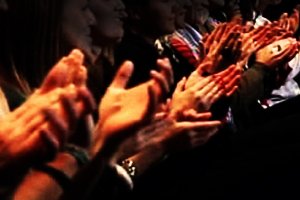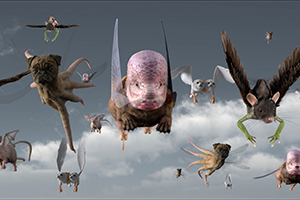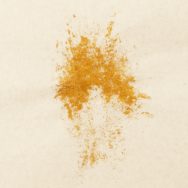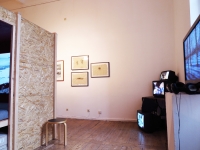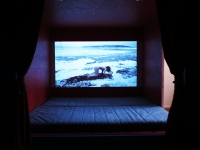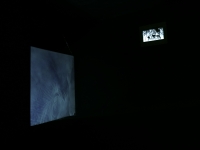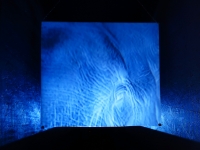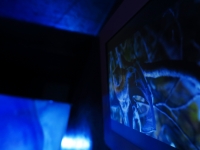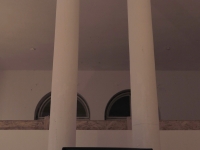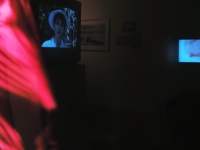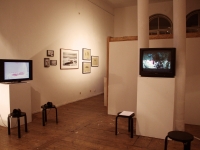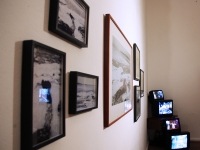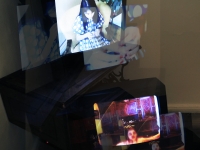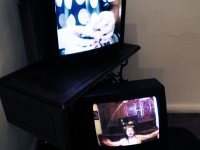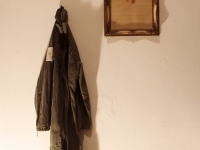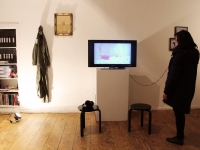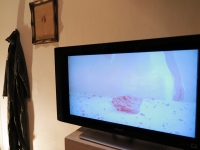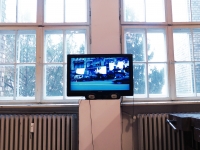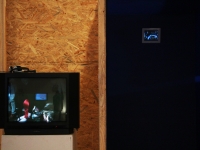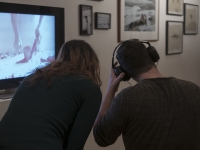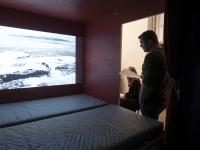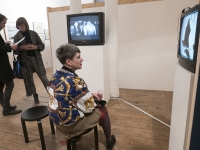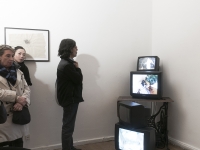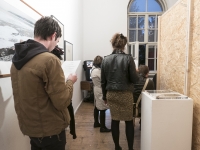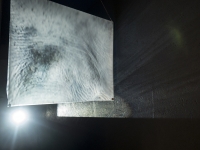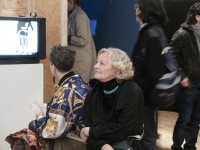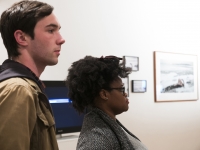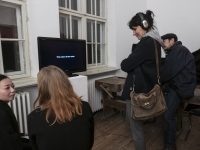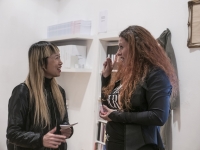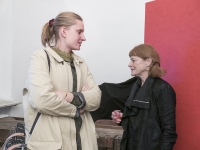8 October – 27 November 2016
Love, Actually…

Nezaket Ekici, Mariana Hahn, Gülsün Karamustafa, Janet Laurence,
Sarah Lüdemann, Tracey Moffatt, Mariana Vassileva
Opening Performance by Mariana Hahn @ 6 – 8pm
Opening: 8 October @ 5 – 9pm
An Interactive Performance with the Artist Reading an Oracle from Clarice Lispector’s Stream of Life ‘Aqua Viva’
Exhibition: 9 October – 27 November 2016
Symposium Program: 26 November 2016 @ 3 – 7pm
PARTICIPANTS:
David Elliott, Curator of The Pleasure of Love, the 56th October Salon
Bojana Pejić, Curator of the 49th October Salon
Jasmina Petković, Producer of the October Salon
Rachel Rits-Volloch, Director of Momentum Worldwide
Artists:
Andreas Blank, Mariana Hahn, Leiko Ikemura, Aleksandar Jestrović, David Krippendorff,
Franziska Klotz, Johanna Kandl, Via Lewandowsky, Sarah Lüdemann,
Milovan Destil Marković, Bjørn Melhus, Kirsten Palz, Mariana Vassileva
SCHEDULE
Performance: 15:00 – 15:30
Sarah Lüdemann, Return of the chthonian – This Is My Land
PANELS:
Panel 1: 16:00-16:45
The October Salon: History of the Salon and The Pleasure of Love.
Speakers: David Elliott, Bojana Pejić, Jasmina Petković
Panel 2: 16:45-15:30
From Salons to Biennales to Belgrade.
Moderator: David Elliott. Speakers: Leiko Ikemura, David Krippendorff, Franziska Klotz, Johanna Kandl, Via Lewandowsky, Milovan Destil Marković, Bjørn Melhus
Panel 3: 17:30-18:15
Building Collections out of Exhibitions. Artists from the MOMENTUM Collection and the October Salon Collection in dialogue with their curators.
Moderator: Rachel Rits-Volloch. Speakers: Andreas Blank, Aleksander Jestrović, Mariana Hahn, Sarah Lüdemann, Kirsten Palz, Mariana Vassileva
Exhibition Viewing: 18:15-19:00
@ MOMENTUM
Kunstquartier Bethanien, Berlin
MORE ABOUT THE SYMPOSIUM HERE >>
Works from the MOMENTUM Collection by Artists Featured In
The Pleasure Of Love: the 56th October Salon in Belgrade
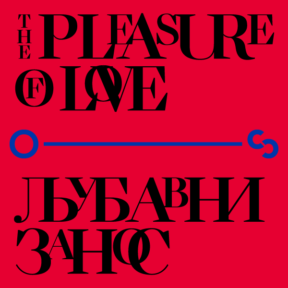
Love, Actually… showcases works from the MOMENTUM Collection by 7 outstanding women artists who are also participating in the The Pleasure Of Love: the 56th Belgrade October Salon. Just as Belgrade’s Pleasure of Love focuses on emotion, on both the pleasure and pain which together constitute love, so too are the works in Love, Actually… tied together by the common thread of love, in its many forms. The love depicted by these works from the MOMENTUM Collection ranges from the literal acts of love and sex in Tracey Moffatt’s climactic video Other, to the accoutrements of love, as Nezaket Ekici (un)dresses herself in her video performance Veiling and Revealing; from the meat love of Sarah Lüdemann’s Schnitzelporno, to animal love in Mariana Vassileva’s Morning Mood, and love of animals in Janet Laurence’s Grace; from the love of childhood innocence in Gülsün Karamustafa’s Personal Time Quartet, to the frigidly self-tormenting love of Mariana Hahn’s video performance Burn My Love Burn. We are proud to bring together these treasures from the MOMENTUM Collection, and in this way to bring a small part of The Pleasure Of Love: Belgrade’s 56th October Salon, to Berlin.
ABOUT
The Pleasure Of Love: the 56th October Salon
Curated by David Elliott
23 September – 6 November 2016
@ The Belgrade City Museum
& The Cultural Center of Belgrade
Belgrade, Serbia
Plaisir d’amour ne reste qu’un moment, Le chagrin d’amour dure toute la vie.
The pleasure of love lasts only a Moment. The grief of love lasts a lifetime.
– Jean-Paul-Égide Martini
‘The pleasure of love lasts only a moment – while – the grief of love lasts a whole life through.’ The opening lines of this 18th century French poem and love song sketch out a pathetic paradox within daily life that still reverberates in the present. Transposed here as the subject of the 56th Belgrade October Salon, ‘The Pleasure of Love: Transient Emotion in Contemporary Art’ examines art in its social and political contexts, contrasting its humane aesthetic values with far less benevolent forces of power and control… In an existential, materialist age of contemporary politics in which public life is characterised, with relatively few exceptions, by bureaucratic obfuscations of vested interests, greed, mendaciousness, stupidity and anger, the 56th Belgrade October Salon focuses on love, the exact opposite of such hateful characteristics, as both a subject and prism through which to view the world.
The first Autumn Salon was organized in Paris in 1903 as an antidote to the blindness of the art establishment by accepting artists who had no other place to show their work. Paintings were exhibited by, the as yet unknown, Pierre Bonnard, Henri Matisse, François Picabia, Paul Gauguin and many others. The 56th Belgrade October Salon, a distant relative of this initiative, pays homage to this illustrious past by showing a number of artists who do not yet have an international platform for their work alongside already established artists. It will also reflect on what transient pleasures, and its opposite, signify when expressed in art today.
In 1784 Jean-Paul-Égide Martini composed Plaisir d’Amour, a classic love song based on a poem by Jean-Pierre Claris de Florian who, one of many victims of the Terror of the French Revolution died in 1794. But Florian’s words have echoed across time to still speak in the present, both in Martini’s original arrangement and deformed into kitsch, at once eternal and fleeting. Fully aware of such historical vicissitudes and paradoxes, this October Salon concentrates on what role emotion plays in contemporary art and how it may be framed in ways that are neither banal nor kitsch. This may include the not-so-simple pleasures of love, humor, horror and any other perspectives that art may bring to bear on the fragility of human experience and life which, in itself, may have a transient or long-lasting impact.
The Pleasure of Love, the 56th October Salon, is composed of 60 artists from 27 countries, including Serbia, the Balkan region and the world at large. The Salon takes place in the Belgrade City Museum and in the Cultural Center of Belgrade from the September 23rd until the 6th of November.
– David Elliott
MORE ABOUT THE 56th OCTOBER SALON >>
Love, Actually…
Featuring:
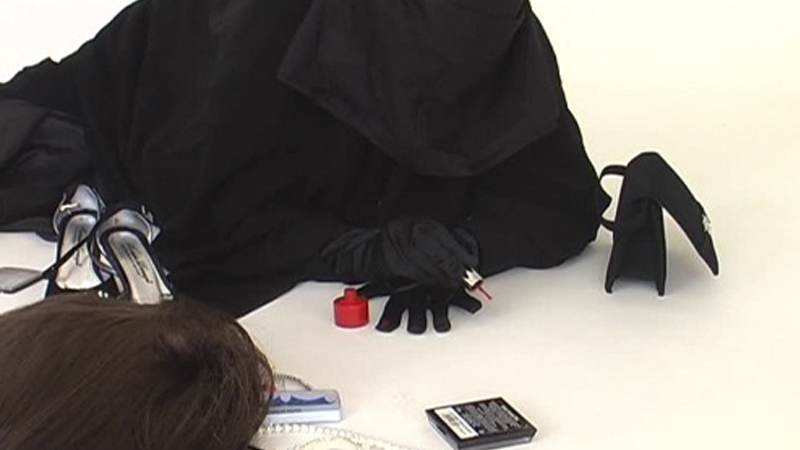
NEZAKET EKICI
Nezaket Ekici’s video, installations and performances are often process-based and ask viewers to derive their own emotional and intellectual interpretations. In her work, complex, often controversial topics are suspensefully countered by their aestheticizing presentation. Ekici frequently uses her own Turkish origins and education as a subject of tension, pitting her background against her living environment in present-day Germany. Cultural, geographic and individual boundaries, transgressions, gender, cross-border connections and authorial bodies are central to Ekici’s works. By highlighting these themes in everyday life and placing them in a new context, she aims to interconnect every element to form a total work of art — a Gesamtkunstwerk. Born in Kırşehir, Turkey in 1970, Ekici studied art pedagogics, sculpture and performance in Munich and Braunschweig, Germany. She then began working with performance and completed a master’s degree in Performance Art with Marina Abramovic. She has exhibited internationally, with a total of more than 120 different performances on 4 continents in more than 100 cities and 30 countries. She currently lives and works in Berlin and Stuttgart.
Veiling and Reveiling, 2010
Whether in Germany or in the artist’s native Turkey, the question of the Tschador’s meaning and effects remains controversial. How do streamlined notions of feminine beauty intersect with a headscarf’s political and religious references? For Ekici, stories of Turkish students donning wigs to conceal their forbidden headscarves at university, or methods of transporting beauty goods beneath the veil, have led her to question if women can ever truly wear head coverings out of free will. In the video performance Veiling and Reveiling, Ekici wears a Tschador in which various items are concealed: a wig, make-up, bag, bra, dress, tights, jewelry, shoes, artificial eyelashes. The video begins when the individual pieces are produced from the pockets of the Tschador and concludes when the veil has been fully redecorated, a willful inversion of public and private space.

The Tube, 2013
This performance, re-enacting her 2008 work, TUBE (duration 30 minutes), is based on the 1925 Otto Dix painting Anita Berber. Dix’s painting of Berber, a dancer and actress who was considered the embodiment of the 1920′s femme fatale, depicts her in a tight, red dress. Ekici, in turn, squirms and dances her way into a five meter long, red cloth tube with overly long arms. Behind Ekici, a projection depicts the artist in a snow-covered Canadian landscape, wearing the same red dress. The audience is thus confronted with two different yet corresponding worlds on the threshold of two mediums: the live performance, its projected mirror, and everything that happens in the space in between.
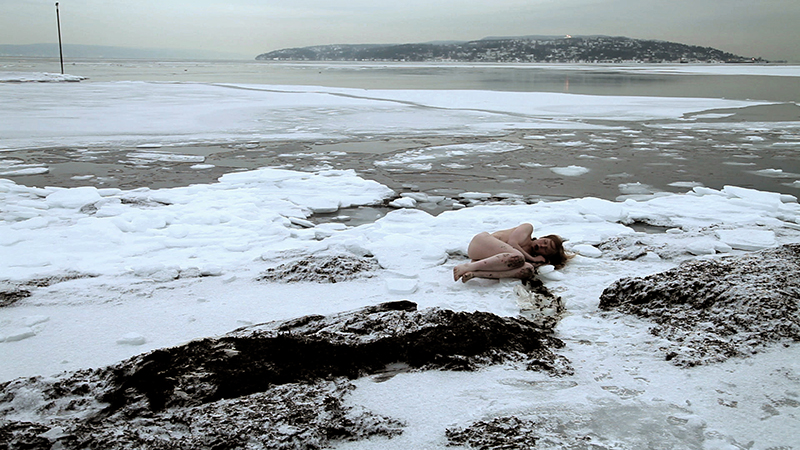
MARIANA HAHN
Born in Schwaebisch Hall in the south of Germany, Mariana Hahn studied theater at ETI in Berlin and has a degree in Fine Art from Central St. Martins in London (2012). Following her performance of I Sweat You in MOMENTUM’s emerging artist series About Face (2012), Hahn has twice more exhibited in the gallery: Burn My Love, Burn, which was shown as part of the exhibition Missing Link (2013), and Empress of Sorrow, commissioned and performed during MOMENTUM’s month-long performance series Works on Paper (2013).
Burn My Love, Burn, 2013
The work Burn My Love, Burn explores the body as the carrier of historical signature. By inscribing a poem on a shroud that once belonged to her recently passed grandmother – and then burning and consuming its remains – Hahn examines the relationship between text, memory making, and the human – particularly female – form. The work is composed of the remaining performance relics, video stills, and the video itself.
“The body does so by will, it inscribes, devours the story, becoming a container that vibrates and lives within a narrative. The shroud becomes the elementary signifier of such a historical narrative, it has been impregnated by the story, acts as the monument.
Through the burning, it can become part of an organic form in motion. The text conditions and creates the body within the very specifically hermetically sealed space.
The words activate the body’s field of memory as much as it creates a new one, adding on to the net of connotations the figure has toward words. The ritual becomes the form through which this transformation can be made, the body eats the body, destroys and paints again, another image. Again this is done by the word, it creates the flesh, gives it differentiating coloration, its plausible point of view. The body acts as a paper, it is inscribed by those murmurs of history, becoming a living artifact of its own history.
– Mariana Hahn
Live Performance by Mariana Hahn
An Interactive Performance with the Artist Reading an Oracle from Clarice Lispector’s Stream of Life ‘Aqua Viva’
i will read peoples oracle, share this with them in an intimate fashion.
i read the oracle from Clarice Lispectors stream of life, all my art works have their name from this book.
basically the names of the art works are the oracle reading of/for the art works.
this performance is about giving, sharing a moment with people.
its affirmative to life and open. how love should be.
– Mariana Hahn
Previously performed at Social Fabric, curated by David Elliott at Mill 6 Foundation, Hong Kong

GÜLSÜN KARAMUSTAFA
Gülsün Karamustafa was born in 1946 in Ankara, Turkey. She lives and works in Istanbul, where she is recognized as one of the most important and pioneering Turkish contemporary artists. Her work addresses questions of migration, displacement and military dictatorship (during the 1970s she was imprisoned by the Turkish military). She was refused a passport for sixteen years until the mid-80s and, unlike other Turkish artists, could not emigrate or travel. This enforced isolation led her to an analysis of her own situation and context: the city of Istanbul, interior migration and nomadism within Turkey, and the ideological and psychological ramifications of identity. Like a sociologist or anthropologist, Gülsün Karamustafa explores the historical and social connections of oriental cultures in her works, often using materials that express the hybrid character of different cultures and religions. Ostensibly reverting to historical lore, Karamustafa’s artistic comments oscillate actually between sensual meta-narratives and ironic-critical stories about the present situation, addressing themes of identity and migration, cultural difference and acculturation within the contexts of orientalism and post-colonialism. Since the end of the late 1990s, she has often used already existing materials and images of oriental or occidental origin that she fragments, dismantles and reassembles in order to contrast ‘private’ with ‘public’ by referring to every-day life, culture, art history, and the media.
Personal Time Quartet, 2000
The video and sound installation Personal Time Quartet is designed as an ever-changing soundscape to accompany continually repeating images of a never-ending childhood. The sound was composed especially for this work by Slovak rock musician, Peter Mahadic. Comprised of various sound-samples (some of which are from rock concerts), each track was made to activate one of the four channels of moving image. The work is installed in such a way that each time the work is turned on anew, the four channels never synchronize, instead producing each time a new quartet to accompany the looping images. The four-part video Personal Time Quartet is concerned with the point of in- tersection between the artist’s own personal biography and the history of her home country. Having been invited to an exhibition of German domestic inte- riors from various periods in the twentieth century at the Historical Museum in Hanover, Karamustafa was inspired by what she saw there to take a closer look at the similarities between her own childhood reminiscences and these muse- ological German living spaces. The timeframe (or ‘personal time’) covered by these four video’s begins in the year of her father’s birth and ends in the early days of her own childhood. A video screen placed in each of the rooms shows the same young girl – the artist’s alter ego – engaged in various activities. We see her skipping with a skipping rope (dining room, 1906), sorting and folding laundry (kitchen, around 1913), opening cupboards and drawers (living room and parents’ bedroom, around 1930) and painting her nails (room from the 1950s). The films themselves, however, were not shot inside the museum, but rather in her apartment in Istanbul. Viewing them therefore gives rise to the most diverse associations. The girl skipping suggests a carefree childhood, the nail-painting a concern with the artist’s own femininity, the folding of laundry could be read as preparation for her future role of housewife, while opening cupboards and drawers is a way of discovering the hidden secrets and stories that are so much a part of our recollections of childhood and adolescence. In this installation, therefore, Karamustafa not only debunks the local or national specificity of certain styles, but at the same time exposes just how similar the evolution of (female) identity can be, even in very disparate cultures.
– Barbara Heinrich,from Gülsün Karamustafa. My Roses My Reveries,Yapi Kredi Kültür Sanat Yayıncılık A.Ş, Istanbul, 2007.
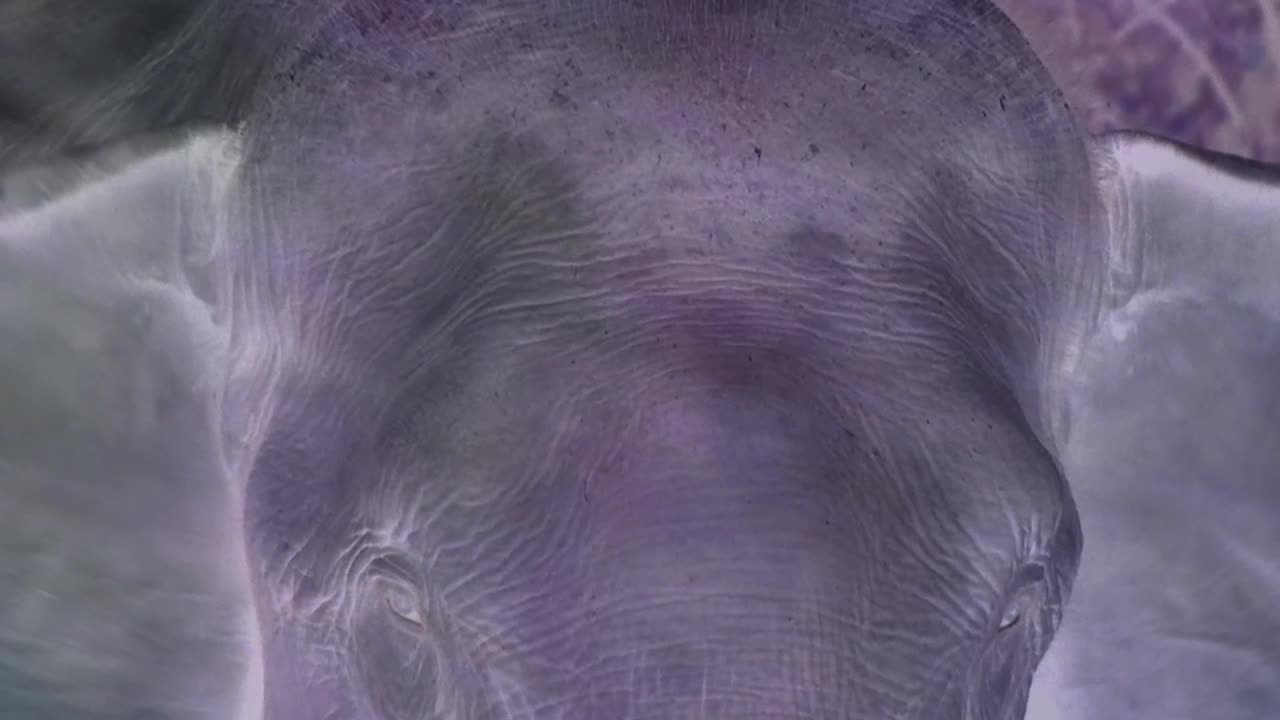
JANET LAURENCE
Australian artist Janet Laurence‘s work explores a poetics of space and materiality through the creation of works that deal with our experiential and cultural relationship with the natural world. Her work echoes architecture while retaining organic qualities and a sense of instability and transience. It occupies the liminal zones and meeting places of art, science, imagination and memory. Laurence’s practice includes both ephemeral and permanent works as well as installations that extend from the museum/gallery into both urban and landscape domain. Her work, centered on living nature, bleeds between the architectural and the natural world, physically and metaphorically dissolving these boundaries. Her spaces are immersive and reflective, creating a play between perception and memory. Alchemical transformation, history and perception are underlying themes. Laurence’s work is represented in major Australian and international collections and has been included in many national survey exhibitions.
Grace, 2012
Donated by the artist to the MOMENTUM collection in 2013, “Grace” can be considered a meditation on the relation between energy sources and their visualization, the origins of material, ethics and interconnected, environmental networks.
This ecological crisis demands we shift our focus from a human-centred perspective to a broader multispecies, environmental approach, for how else are we to live ethically and find our place in this world. This is one of a series of videos made during my research in wildlife sanctuaries, using hidden cameras specialized for zoology research. In projection, the videos are are altered and slowed… I want to bring us into intimacy with these animals and to reveal our interconnection… I want to bring us into contact with the life-world. With a focus on the animals and their loss, I think about the loneliness of the last one of a species. What was their death? I wonder about their umwelt, the unique world in which each species lives. The bubble of sensation. This notion is powerfully articulated by the biologist Jacob von Uexküll, who has enabled rare insight into the worlds animals inhabit. An organism’s umwelt is the unique world in which each species live, the world as its body represents it, the world formed by the very form of the organism. It is a sensory world of space, time, objects and qualities that form perceptual signs for living creatures. I think it’s important to find this link in order to find compassion and care for developing a real relationship with other species we have to share the planet with.
– Janet Laurence
These are the days of violent extinctions, of global dimming and moving dust bowls, of habitat fragmentation, ice melt, and plundered lives. Animals are experiencing all this loss, and if we could better hear the waves of their agony, we would know this and be tormented. We would know that for the rest of our lives we will hear a growing chorus of increasingly diverse voices…
– Debbie Bird Rose
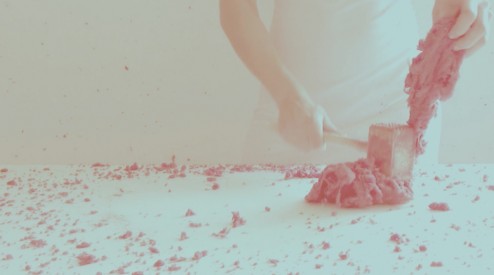
SARAH LÜDEMANN
Repetition and the act of looking are strong features in Sarah Lüdemann’s work. Her non-narrative video installations and performances can simultaneously take on epic form and repeat a single gesture or action until it looses its original purpose and gains a new, underlying meaning. Lüdemann’s work demands concentration and the willingness to look beyond surfaces, a practice that requires both the artist’s and the viewer’s engagement over time. This extended period of visual reflection and subsequent delayering of identity mirrors the process of psychological examinations of self, social and gender roles, religious beliefs, rituals and modes of perception and (re)presentation. Usually quiet but gently and cunningly persistent, Lüdemann’s works insist on an authorial presence that forcefully and consistently questions power structures within hierarchical systems. Through her works, she examines the nature of communication, language, movement and ideologies. At the same time conceptual and sensual, her pieces embrace both mind and body, effectively inviting a holistic engagement with dislocated meanings. Lüdemann finished an MA in Fine Art at Central Saint Martins/Byam Shaw in 2011. In 2009 she was selected for an influential residency with Mona Hatoum. She has additionally been awarded the South Square Trust Award and was shortlisted for the Arts & Humanities Research Council BGP Award in 2010.
Schnitzelporno, 2012
Commissioned for MOMENTUM’s first emerging artist series, About Face, held in Berlin (2012) and London, Schnitzelporno is a durational performance-for-video in which an unidentifiable Lüdemann beats a piece of meat for a total of two hours. This physically taxing action, which begins with the pristine, white-clad figure sensually stroking the meat’s surface, eventually ends in the steak’s total demolition. Slowed down to three hours of video and artificially lightened, the final, washed-out video disconcertingly emphasizes the separation between soft, caressing gestures and the brutality of the action itself. Each initial stroke strips away the immediacy of the violence – an act that, when paired with an understanding of the meat as bodily metaphor, calls into question the viable limits of (female) identity shaping. What happens, Lüdemann asks, when this familiar, formative action is repeated without end?
“The idea of making, shaping and even distorting your body and hence your ‘self’ in order to create a loveable, admirable, respectable etc. (re)presentation of ‘self’ suggests a desire to control and a degree of violence and brutality towards oneself.
In Schnitzelporno I abstract the body into flesh, into meat, which I modify by means of a tenderizer. The tool itself already bears an outlandish idea, i.e., to beat something in order to make it soft and tender. The tool and its original purpose is further taken ad absurdum, for I do not stop beating the piece of meat until it is entirely erased, until I am NObody. Initially the imagery of the video installation is poetic and beautiful; slowly it becomes repetitive and eventually revolting, disgusting and absolutely brutal.”
– Sarah Lüdemann
Installation & Performance: return of the chthonian – this is my land
i am an anthropologist, an awkward surrealist, poetic road kill. i am the naked hunter, an Amazonian goddess, an oozing bitch. i am a magician, i am Alice. i am no feminist, my darlings!
let me make a mark, scratch the surface, scratch myself,
do not dislocate your body, dig in your brain for your animal ancestry – in order to sense the storm.
dynamite me! rip me apart and put me back together. blow my bones, sing for my flesh. make it all vibrate at higher frequencies, so I can reach for the stars.
that which built the cosmos was androgyne – total sex – without the bang there would have been no planet earth.
– Sarah Lüdemann
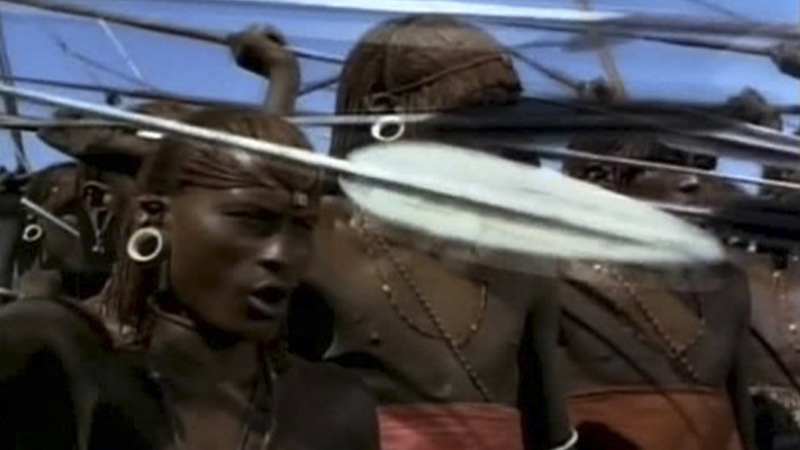
TRACEY MOFFATT
Tracey Moffatt is one of Australia’s leading contemporary artists of international renown. Since her first solo exhibition in Sydney in 1989, she has had numerous exhibitions in major museums around the world. Working in photography, film and video, Moffatt first gained significant critical acclaim when her short film “Night Cries” was selected for official competition at the 1990 Cannes Film Festival. Her first feature film, “Bedevil,” was also selected for Cannes in 1993. In 1997, she was invited to exhibit in the Aperto section of the Venice Biennale, and a major exhibition of Moffatt’s work was held at the Dia Center for the Arts in New York in 1997/98, which consolidated her international reputation.
Having begun her career as an experimental filmmaker and as a producer of music videos, Moffatt eventually focused on filmmaking and cross-media practices after gaining acclaim as a photographer. Her investigation of power relations, which by the late 1990s often revolved around the relationship between Australian Aborigines and white colonial settlers, more recently engages contemporary media and the nature of celebrity. Known for her non-realist narratives reconstructed from pre-existing sources, Moffatt uses experimental cinema devices such as audio field recordings and low tones to provide playfully ironic commentary on the subjects of her found footage.
In the span of her 25 year career, Moffatt has held more than 100 solo exhibitions of her work in Europe, the United States and Australia, including the Museum of Modern Art, New York; the Dia Center for the Arts, New York; the Hasselblad Centre in Goteburg, Sweden; the Museum of Contemporary Art, Sydney; and the Art Gallery of NSW, Sydney. Tracey Moffatt was the recipient of the 2007 Infinity Award for art by the International Center of Photography, New York. In 2017, Tracey Moffatt will become the first indigenous artist to represent Australia in the Venice Biennale.
Other, 2009
As one of the founding collection donations following MOMENTUM’s first benefit exhibition, “Other” incorporates film techniques – splicing film clips, combining chronologies, creating and dissolving narratives – that parallel MOMENTUM’s questioning of time-based art.
“OTHER is a fast paced montage of film clips depicting attraction between races. Marlon Brando looks at Tahitian girls and Samantha from Sex and the City ogles an African American football player in the men’s locker room.
Seven minutes of gazing and touching and exploding volcanoes. Very funny, very hot.”
– Tracey Moffatt
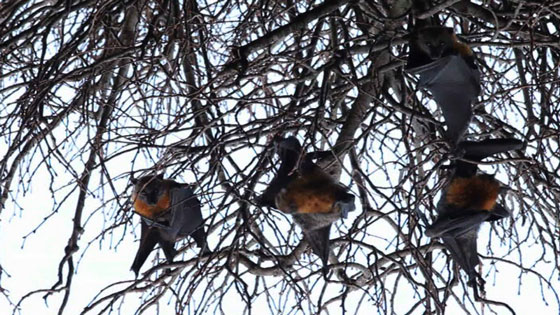
MARIANA VASSILEVA
Mariana Vassileva was born in Bulgaria in 1964. Since graduating from the Universität der Künste in 2000, Vassileva continues to live and work in Berlin. Working across varied mediums such as video, sculpture, installation, and drawing, Vassileva’s practice is concerned with the poetry that lies beneath the quotidian and the routine. Based upon observation of daily life, her works respond to an element of playfulness inherent in artist and viewer alike. With the curious gaze of a voyeur or of an urban anthropologist, the artist observes people and their surroundings in order to capture a moment of poetic imagery. Watching, and the distance it implies, are both method and subject of a body of work reflecting on human concerns familiar to us all: communication, cultural displacement, relations with self and other, loneliness and the humor hidden within the rhythms of the day-to-day.As her artist’s statement asserts, she “transforms objects, situations and manners, and presents them in another reference on a lyrical level. … In this process, one is animated toward a heightened sensibility of daily variations.”
Morning Mood, 2010
Morning Mood (2010) was shot in the Sydney Botanical Gardens after Vassileva’s participation in the 17th Sydney Biennale, Songs of Survival in a Precarious Age (2010). The early morning routines of these bats as they resist the onset of the day and squabble with each other evoke the viewer’s potential for both differentiation and identification. Turning her camera to a creature perhaps more frequently associated with darker themes like blood and night, Vassileva captures the uncanny warmth of their morning moods. A single bat burrowing his face in his wings and reluctantly stretching his neck is eminently relatable, as are the sounds and rhythms of many bats gathering on the branches of a tree. As the three and a half minute long video loops over and over, we confront not just the strange humanity of these bats’ morning routine, but also perhaps the very animalistic qualities of our human routines. – Jenny Tang
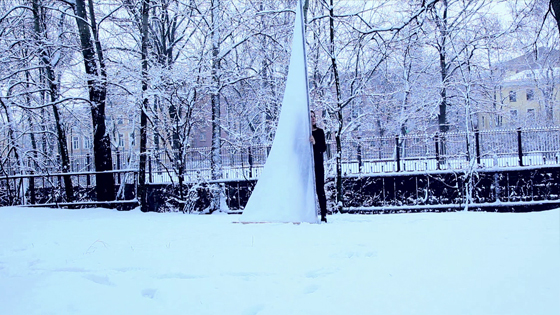
The Color of the Wind, 2014
The Color of the Wind (2014) was made during Mariana Vassileva’s residency at the National Centre for Contemporary Arts (NCCA) in St. Petersburgh / Kronstadt, Russia, in March, 2014. In this video-performance, Vassileva con- joins the motif of a blank canvas and her own, human figure, traversing the urban and natural landscapes of Kronstadt – St. Petersburgh’s main sea- port and century-old army-town. As a historical site for political struggle, to which Kronstadt’s famous fortifications unrelentingly attest, we now won- der what it is that is being fought for in Vassileva’s act of silent protest. “Why did you not write anything on the banner?”, people on the street asked her. Be it an act of empathy and concern within the context of Russia’s current cultural climate of censorship and infringement of freedom of expression, or an invitation for people to consider for themselves what it is that should be written on it, Vassileva’s poetic visual language captivates the viewer, as we are addressed in a narrative mode, while never granting us the comfort to passively sit back and read.
Watch the performance
“Return of the chthonian – This Is My Land”
by Sarah Lüdemann
INSTALLATION VIEWS
Photo Credit: Leslie Ranzoni
PHOTOS OF THE OPENING
Photo Credit: Réka Horváth


 Back to Homepage
Back to Homepage